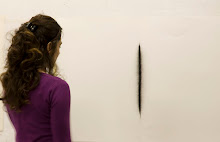In 2016 I started recognizing that the quality of flesh that I had been exploring, was also a quality found in nature. This was the result of daily trips to the forests of the Ipirus region. What caught my interest were especially trees and fungi developing on them.
I drew and painted these natural bodies, approaching them in the same way as I approached my own flesh. This was the start of my work on the connection of the body and nature, something that has come to interest me more and more. A view of nature as bodily flesh, and the body as an extension of nature.
Since then I have been aquainted with the phenomenology of Maurice Merlau Ponty, and his final work 'The Visible and the Invisible'. Also with the writings of David Abram and Suzi Gablik. I was so happy to find a connection of my thinking to these approaches to the world and art, bringing me before the realization that my work had a strong link to contemporary ecological thinking.
Ever since my first studies in Social Psychology, my work has been about going beyond the dualistic dichotomies between e.g. the self and the world, the human body and nature that have dominated the worldview of our Western culture. Exploring and revealing the fundamental unity of the human being and the natural world is the basis of my recent work and the start of a new period.
As Suzi Gablik says, relationship is the key insight of ecology.
Here are some examples of this work, from 2016
I drew and painted these natural bodies, approaching them in the same way as I approached my own flesh. This was the start of my work on the connection of the body and nature, something that has come to interest me more and more. A view of nature as bodily flesh, and the body as an extension of nature.
Since then I have been aquainted with the phenomenology of Maurice Merlau Ponty, and his final work 'The Visible and the Invisible'. Also with the writings of David Abram and Suzi Gablik. I was so happy to find a connection of my thinking to these approaches to the world and art, bringing me before the realization that my work had a strong link to contemporary ecological thinking.
Ever since my first studies in Social Psychology, my work has been about going beyond the dualistic dichotomies between e.g. the self and the world, the human body and nature that have dominated the worldview of our Western culture. Exploring and revealing the fundamental unity of the human being and the natural world is the basis of my recent work and the start of a new period.
As Suzi Gablik says, relationship is the key insight of ecology.
Here are some examples of this work, from 2016
 |
| The Fall (After Rubens) 2016, Soft Pastel on paper |
 |
| Unknown pleasures, 2016 Soft pastel on paper 70x100cm |
 |
| Inferno, 2017 Soft pastel on paper, 87x125 cm |
 |
| Attachment, 2016 Soft pastel on paper, 1x1.5m |





























